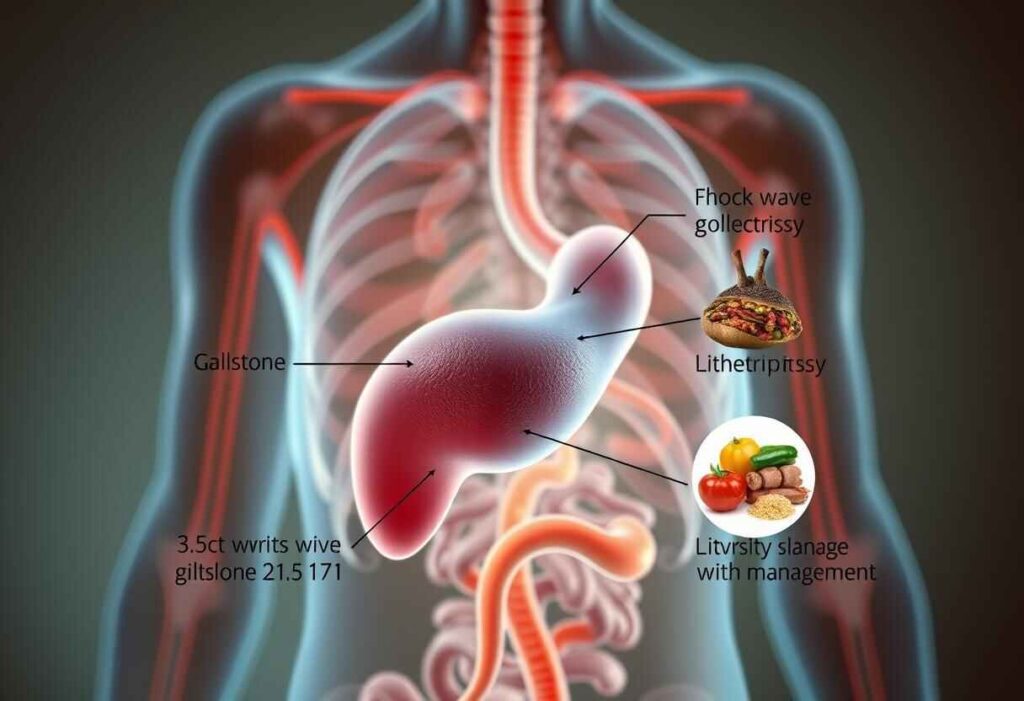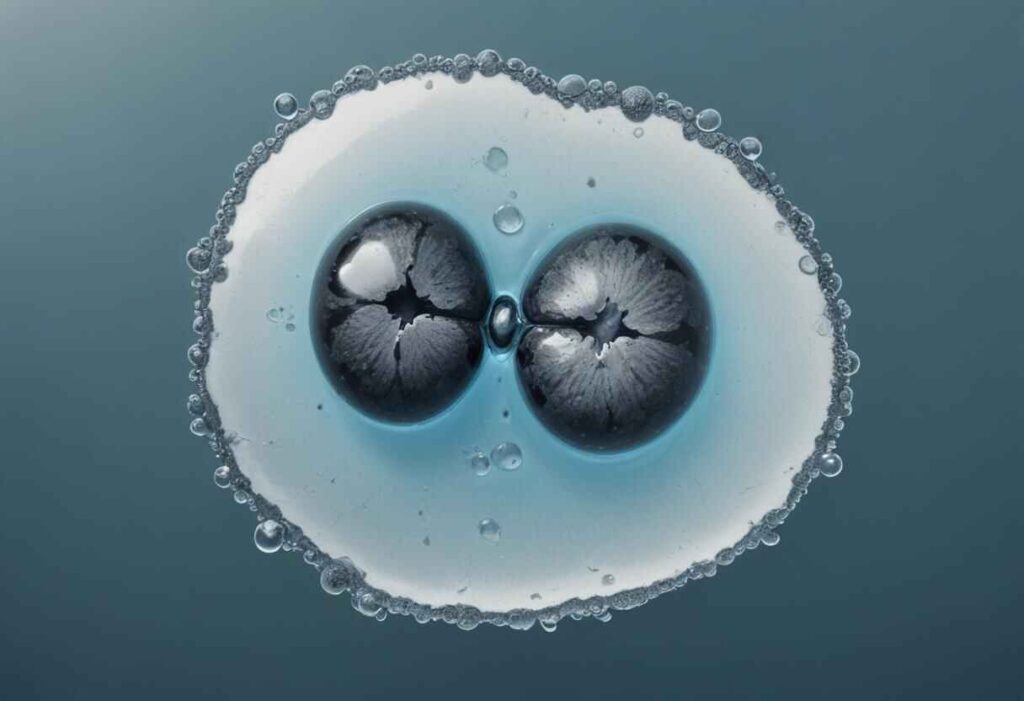Gallstones are little lumps made of cholesterol and bilirubin that form in your gallbladder and they can really hurt! Some people don’t have any problems with them, but if you have a 2.5 cm gallstone, it can cause discomfort. But don’t worry, there are ways to treat it! Let’s talk about what having a 2.5 cm gallstone means and how we can deal with it.
Understanding Gallstone Size and Symptoms
Size isn’t the only thing that matters for treatment. Some people with small gallstones have strong pain in the upper right belly, feel sick, and throw up. On the other hand, some people with big gallstones don’t feel anything. It depends on if the stone blocks a bile duct and causes inflammation.
| Gallstone Size | Description | Symptoms | Common Treatments | Risk Factors |
| Small (< 5mm) | Tiny stones, often multiple in number | May be asymptomatic; possible biliary colic | Observation, pain management | Rapid weight loss, high cholesterol |
| Medium (5-10mm) | Moderate-sized stones | Biliary colic, mild nausea, occasional pain | Pain management, lifestyle changes | Obesity, sedentary lifestyle |
| Large (10-20mm) | Significant size, more likely single | Severe pain, jaundice, nausea, vomiting | Medication, non-invasive procedures | High cholesterol, family history |
| Very Large (>20mm) | Large, often solitary stones | Intense pain, possible blockage of bile duct | Surgery (cholecystectomy) | Chronic liver disease, diabetes |
| Mixed Sizes | Combination of sizes, varied shapes | Variable symptoms depending on size/type | Customized treatment plan | Gallbladder inflammation, infection |
Treatment Options for Your 2.5 cm Gallstone
Here are the main ways your doctor might suggest treating your 2.5 cm gallstone:
- Watching and Waiting: If you’re not feeling any symptoms, your doctor might suggest keeping an eye on the stone with regular ultrasounds. This is often preferred for people with other health issues that make surgery risky.
- Gallbladder Removal: This is the most common treatment for gallstones causing symptoms. It’s a surgery where your gallbladder is taken out through small cuts in your belly. Recovery is usually quick.
- Medication to Dissolve Stones: Some people with small, cholesterol-based stones might be given medication to dissolve them gradually. This might not work for larger stones like yours, but it’s worth discussing with your doctor.
- Shock Wave Therapy: This is a less common treatment where sound waves break down the stones into smaller pieces. However, it’s not used much anymore because it doesn’t always work well and can have complications.
| Treatment Option | Description | Procedure Details | Benefits | Risks/Side Effects |
| Watchful Waiting | Monitoring the condition without immediate intervention | Regular ultrasound exams to track size/growth | Avoids surgery if asymptomatic | Risk of complications if left untreated |
| Oral Dissolution Therapy | Medication to dissolve gallstones | Ursodeoxycholic acid taken over months to years | Non-invasive, gradual treatment | Long duration, possible recurrence |
| Extracorporeal Shock Wave Lithotripsy (ESWL) | Breaking gallstones with shock waves | Outpatient procedure, often combined with oral dissolution | Non-invasive, no incisions | Not effective for all stones, may require multiple sessions |
| Laparoscopic Cholecystectomy | Minimally invasive gallbladder removal | Small incisions, faster recovery | Permanent solution, low recurrence | Surgical risks, potential digestive issues post-surgery |
| Open Cholecystectomy | Traditional surgery for gallbladder removal | Larger incision, longer hospital stay | Permanent solution, good for complicated cases | Higher risk of complications, longer recovery |
Picking the Most Effective Treatment
The better choice depends on a few things, like how you feel, your general health, and the kind of gallstone you have. Here’s what your doctor will think about:
- Your Symptoms: If you’re having a lot of pain often, taking out the gallbladder is probably the better way to stop more attacks.
- Your Health: If you have other health problems that make surgery dangerous, your doctor might suggest keeping an eye on things or using medication to dissolve the stones.
- The Type of Stone: Some medicines only work for certain kinds of stones. For example, one called Ursodeoxycholic acid only works for cholesterol stones. Other types usually need surgery.

Living After Gallstone Treatment
After treatment, especially if you’ve had your gallbladder removed, you can usually get back to your usual routine pretty soon. At first, you might need to change what you eat to help your body get used to not having a gallbladder. But with some small changes, you can still eat a healthy diet.
How to Avoid Getting a 2.5 cm Gallstone
Although there’s no surefire way to stop gallstones, you can lower your chances by making some lifestyle changes:
- Keep a Healthy Weight: Overweight increases the likelihood of gallstones. Try to stay at a healthy weight by eating well and staying active.
- Eat Well: Choose foods like fruits, veggies, and whole grains, and cut back on unhealthy fats, especially saturated and trans fats.
- Get More Fiber: Eating fiber can help your digestion and lower cholesterol levels, which can help prevent gallstones from forming.
| Preventive Measure | Description | Practical Tips | Benefits | Challenges |
| Maintain a Healthy Diet | Consuming a balanced diet with low fat | Increase intake of fiber, fruits, and vegetables | Reduces cholesterol levels in bile | Requires consistent lifestyle changes |
| Regular Physical Activity | Engaging in routine exercise | Aim for at least 150 minutes of moderate exercise per week | Helps manage weight and lowers cholesterol | Time management, consistency |
| Gradual Weight Loss | Losing weight slowly to avoid rapid changes in bile composition | Aim for 1-2 pounds of weight loss per week | Reduces risk of gallstone formation | Slow progress can be frustrating |
| Stay Hydrated | Drinking plenty of water to dilute bile | Drink at least 8 glasses of water daily | Helps maintain optimal bile consistency | May be difficult for those with busy lifestyles |
| Avoid Fasting/Crash Diets | Preventing rapid weight loss which can lead to gallstones | Eat small, regular meals throughout the day | Maintains consistent bile flow | Requires planning and discipline |
Lifestyle and Dietary Changes
While surgery is often needed for symptomatic gallstones, lifestyle and diet changes can help manage symptoms and prevent new stones:
- Healthy Eating: A diet rich in fiber and low in fat reduces the incidence of gallstones. Add vegetables, healthy grains, fruits, and lean meats.
- Weight Control: Keeping a healthy weight through exercise and balanced eating can prevent gallstones. But avoid quick weight loss, as it can raise the risk.
- Hydration: Drinking lots of water dilutes bile in the gallbladder, reducing the chance of stone formation.

Symptoms and Complications
While some gallstones don’t cause symptoms and are found by chance, others can lead to severe pain and complications. Here are signs of a problematic gallstone:
- Biliary Colic: Severe pain in the upper right belly, sometimes spreading to the back or right shoulder.
- Nausea and Vomiting: Often happen with biliary colic.
- Jaundice: Skin and eye yellowing that might indicate bile duct obstruction.
- Fever and Chills: Signs of infection, like cholecystitis (gallbladder inflammation).
Complications from untreated gallstones can lead to serious conditions like acute cholecystitis, pancreatitis, and cholangitis, which need immediate medical care.
Conclusion
A 2.5 cm gallstone presents a notable health concern and needs careful treatment consideration. While non-surgical approaches like oral bile acid pills and ESWL may work for smaller stones or certain patients, surgical removal of the gallbladder is typically the most effective treatment for larger stones. Laparoscopic cholecystectomy is preferred because it’s less invasive and has a faster recovery. However, open cholecystectomy and ERCP are important alternatives for more complex cases.
Visit Here for Treatment: Gallstones

